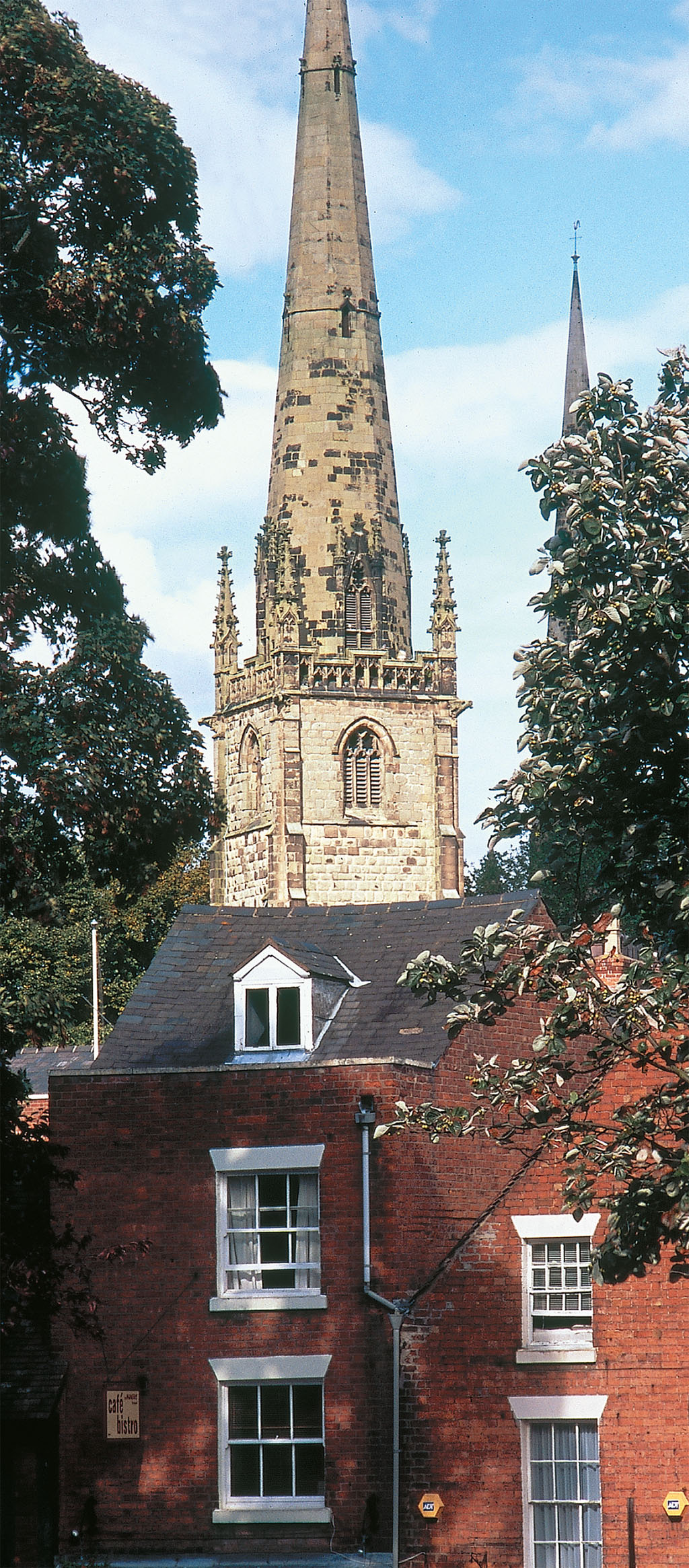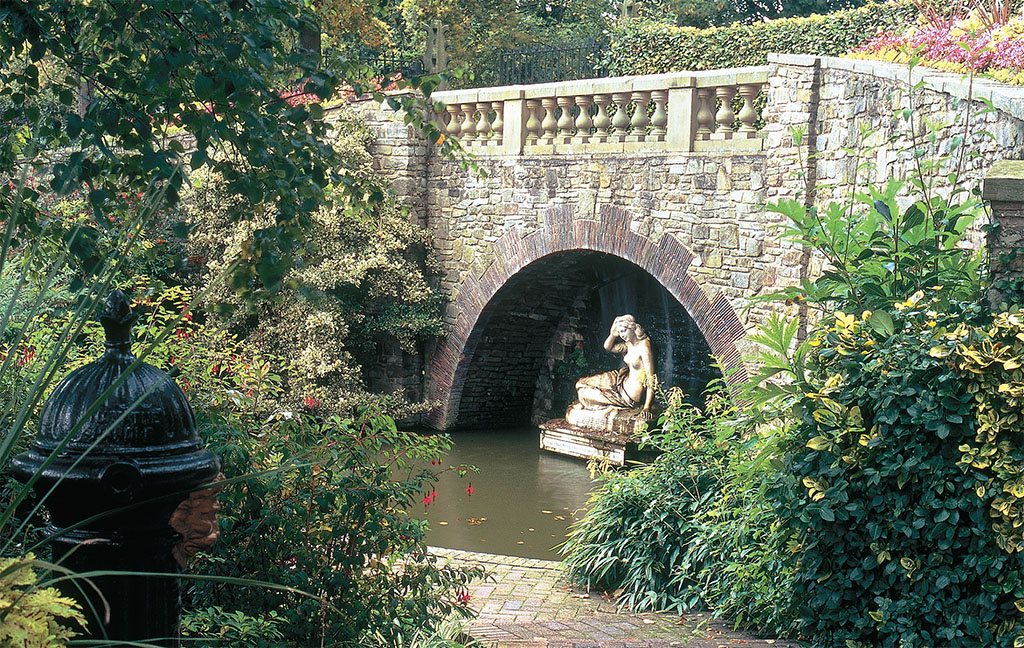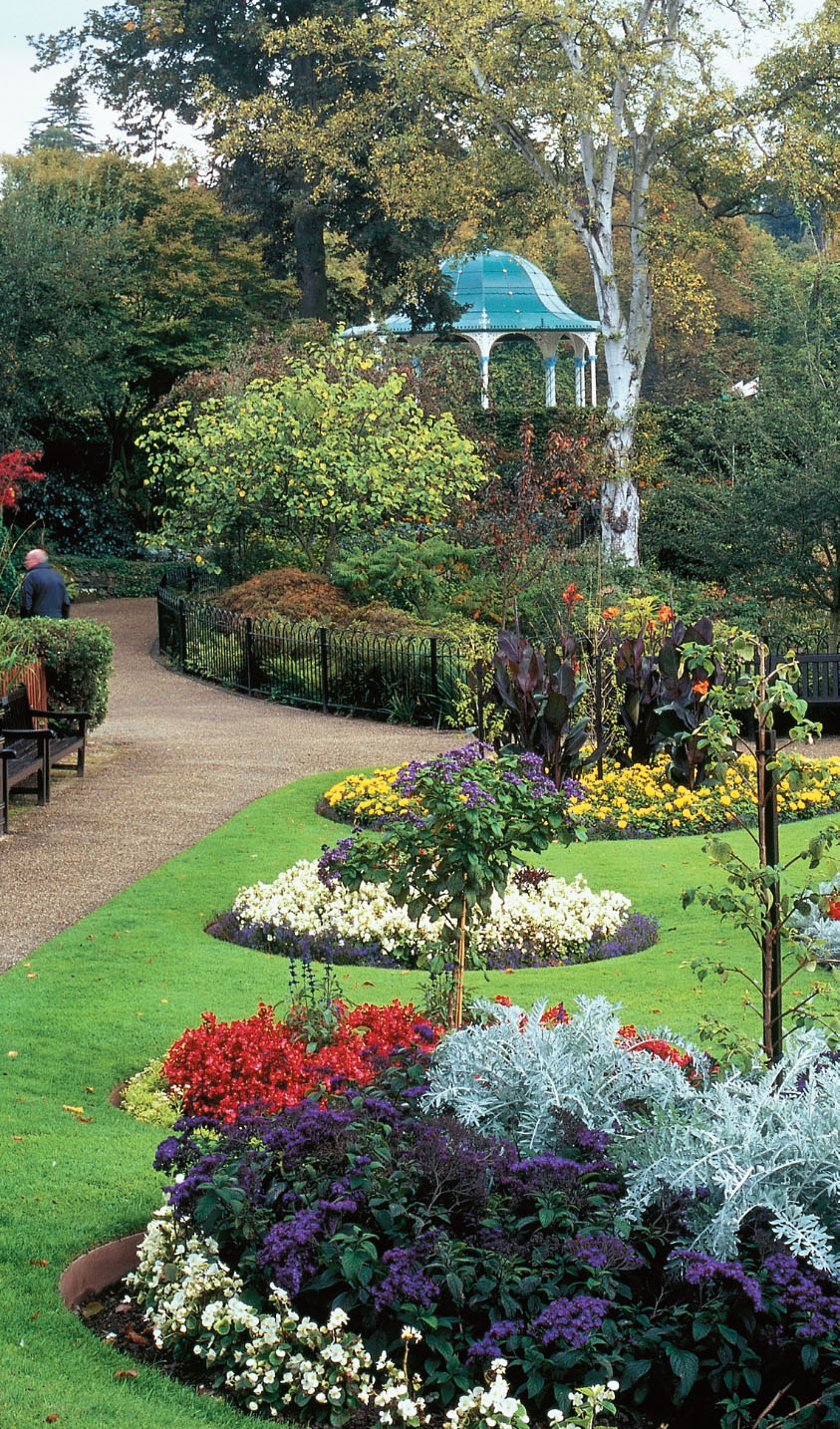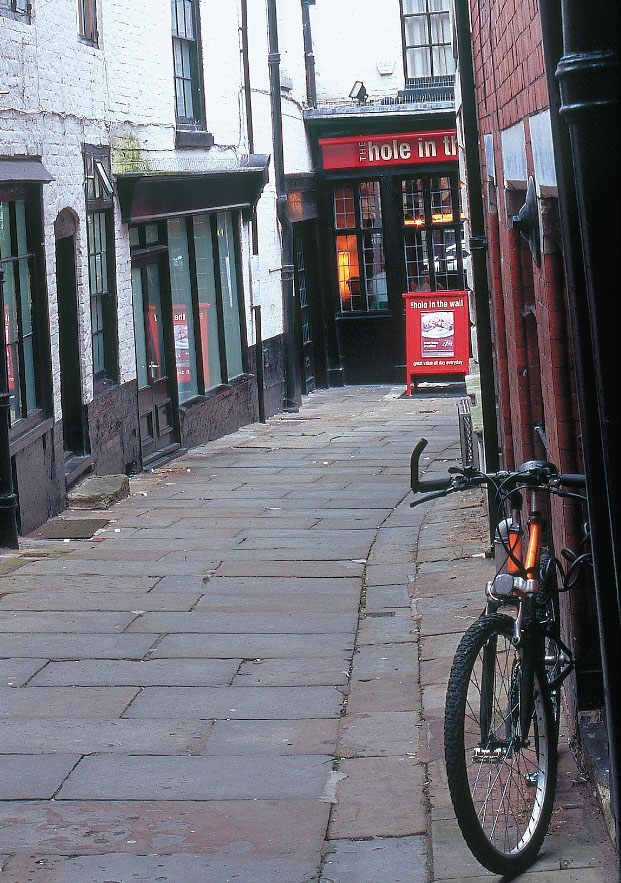
Shropshire’s Medieval County Town
[caption id="ADaytoVisitShrewsbury_Feature" align="aligncenter" width="1024"]

JIM HARGAN
There’s a special character to a town in a river bend. The river will be swift and broad, cutting the town off from the surrounding world. You’ll find trees and parks and a path along the river. The town will rise up from there, a tightly packed agglomeration of medieval, Georgian and Victorian architecture. A castle will command the narrow end, and wondrously historic bridges will scatter about. Shrewsbury, set in the heart of Shropshire countryside within a bend of the River Severn, is all this—perhaps the largest and finest of its kind.
Shrewsbury’s bend is shaped like a lightbulb, its narrow part (on the northeast) a mere 900 feet wide, its southwestern portion bulging out to 3,000 feet. The narrow neck is almost completely taken up by the railroad—a major junction with seven tracks and a large passenger depot, a barrier to the outside world as effective as the medieval walls it replaced.
From there, the Severn takes two miles to double back on itself, a lovely stretch of river lined with a paved footpath, enclosing an area of 165 acres. Within this area, more than 660 listed historic buildings occupy a street plan virtually unaltered over the centuries.
[caption id="ADaytoVisitShrewsbury_img1" align="aligncenter" width="1024"]

JIM HARGAN
The train station is a good place to start. Your first stop is obvious: The fine old Norman castle is 200 yards away, uphill on Castle Street. Made of blood-red sandstone, its curtain walls enclose a four-acre compound. This was the original part of the castle, the inner bailey and keep where its noble lord lived; the major portion of the castle, long since destroyed, stretched across the town’s neck to cut off the entire bend. Today the castle is well kept, with gardens in its courtyard and the Shropshire Regimental Museum within its restored keep.
As you leave the castle, you’ll see an elaborate three-story half-timbered building, encrusted with projecting floors and bay windows, nearly 350 years old. Across the street is a small park by the 1552 Royal Free Grammar School (now the public library), with a statue of its most famous student, Charles Darwin.
This is the typical Shrewsbury view: a mix of historic buildings of great age, all functioning merrily as part of a normal city center. Part of this mix are the “shuts,” medieval streets so narrow as to amount to a sidewalk between buildings, with a full complement of steps, arches, zigzags and tunnels.
[caption id="ADaytoVisitShrewsbury_img2" align="aligncenter" width="1024"]

JIM HARGAN
[caption id="ADaytoVisitShrewsbury_img3" align="aligncenter" width="844"]

JIM HARGAN
Just beyond the library, one of the most picturesque shuts, Castle Court, leads downhill past cottages to the river. You’ll see more shuts as you approach the main shopping district, pedestrianized Pride Hill. Indeed, you’ll just about have to use shuts to get around; they function as essential shortcuts through long blocks in this walker-friendly (and car-hostile) city center.
Pride Hill features the standard selection of High Street businesses. You’ll do much better if you head south from the middle of Pride Hill onto narrow Butcher Row. This is one of Shrewsbury’s hidden delights—two blocks lined with half-timbered buildings and ending at St. Alkmunds Church, whose large churchyard was once the site of the market. From here, Fish Street slants downhill behind the church, with more half-timbering. This was the original center of Shrewsbury and the location of the meat market; a number of its buildings have been standing here since Henry VII was king. It’s also the best place to find a good pub.
From Fish Street, narrow Grope Shut (and you can only guess how it got that name) shortcuts straight to the “new” market center, created in 1261 to replace St. Alkmunds and known simply as The Square. It’s now a shop-lined pedestrian area, with a fine Market Hall (1550) at its center. The 1839 Music Hall occupies the far end and houses the tourist information center—an essential stop, at the very least to get a town map. From here, three of the city’s finest attractions present themselves at three points of the compass in front of you: the county museum to the west, the abbey to the east and the town garden to the south.
[caption id="ADaytoVisitShrewsbury_img4" align="aligncenter" width="1024"]

GREGORY PROCH
The county museum sits 300 yards west, in a 1618 merchant’s house known as Rowley’s House. You’ll find it bursting its seams with artifacts of Shropshire’s rich history, which spans Neolithic megaliths to Roman cities, medieval prosperity to the birth of the Industrial Revolution (at Ironbridge only 14 miles east). There are special exhibits on famed local boys Thomas Telford and Charles Darwin. Although roads and parking lots now surround Rowley’s House, the local council hopes to replace the asphalt with parks by 2012. The main museum will move to the Music Hall, and Rowley’s House will show the lifestyle of an early merchant.
A half-mile east, after crossing the river on an 18th-century stone bridge, you’ll come across the remains of Shrewsbury Abbey, home of the fictional Brother Cadfael and a major center of political power in the real medieval world. Alas, nearly all of it has been destroyed in the years since Dissolution. Today, you will find the western half of its church has survived as an exceptionally pretty parish church, with a few scattered foundation ruins near its small churchyard.
To the south lies the old town’s residential district, a tight collection of cottages and small mansions from medieval to Georgian times. It’s a pleasant quarter-mile stroll (made more intriguing with a start through tunnel-like Coffee House Shut) southward to Shrewsbury’s major greenery, Quarry Park.
This park, a venue for strolling along the Severn on wide, tree-lined paths, stretches along the Severn for 2,500 feet and can reach a width of 900 feet. Two remarkable bridges frame the park: the privately owned Kingsland Bridge on the east (which will charge you 10p to drive and a penny to walk), and the Porthill footbridge on the west, a lovely cast-iron suspension structure. The Quarry’s most remarkable sight, however, is the Dingle, a medieval borrow pit that the Victorians converted into a stunning flower garden, with a marble statue of the Goddess of the Severn tucked in a grotto by its central pond. One of Britain’s most important flower shows is held here every spring.
And where to now? Just across the Porthill Bridge is the Boat House Inn, listed in an 1893 guidebook and probably much older, still in business at its fine old half-timbered building on the River Severn. Find a seat on the terrace, order something refreshing and enjoy the view over the River Severn to the town within the bend.
Getting Around in Old Shrewsbury
Honestly, the old town is not a good place to bring a car. Its heavy traffic is forced into a wandering loop by one-way streets, a different circuit for each direction with many surprise turns. Parking is limited and expensive, and seldom close to the popular sites. The best choice is to approach the town center from the west, circling around Shrewsbury on the A5 freeway to pick up the A458. Just before the highway crosses the river to dive into the old town, take a left to the Frankwell Car Park, the largest and cheapest. A handsome, modern, cable-stayed footbridge takes you across the Severn and into the old town; the depot is 400 yards to the left.
Once you’ve made your way to the Quarry, the quickest way back is to follow the riverside path upstream. If you are parked at Frankwell and are enjoying a pint at the Boat House Inn, your car is 600 yards upstream, following a footpath waymarked as “The Severn Way,” and your total walk (from Frankwell to the depot, then to The Quarry, and back) has been 1.8 miles. Add Rowley’s House and Shrewsbury Abbey to your itinerary, and you’ll have walked 4.2 miles.
[caption id="ADaytoVisitShrewsbury_img5" align="alignright" width="621"]

JIM HARGAN





Comments